The school on the hill at Farnborough
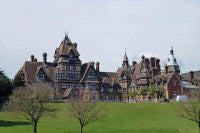
Thomas Longman, the publisher, began building the house in 1860, however, Farnborough Hill's most famous resident was the exiled Empress Eugénie, widow of Emperor Napoleon III of France, who lived there from 1880 until her death in 1920.
The history of the school itself began in 1889 when The Institute of Christian Education established a convent school. They purchased the
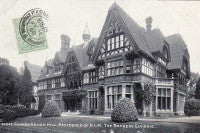
The picturesque and historic surroundings give the school a firm sense of identity, providing a safe and stable environment where girls experience a happy atmosphere of friendship and support.
Head Groundsman, Dave Bell, and his two man team of Nick Tunnicliffe and Simon Green, have a busy job keeping on top of the maintenance of everything on site which includes sports facilities for hockey, football, rounders, athletics, tennis - hard and grass courts - and, new this year, cricket. In addition, there are ten acres of formal gardens, a mile of perimeter woodland, rhododendron lined paths and a mass of meadowland.

The team, which includes an extra summer worker, need to be ready for anything. For example, this year, they have been busy building new hockey backboards, laying re-enforcement mesh in the car park, and monitoring the numbers of Canada geese, which are eventually controlled by a contract falconer!
Staff and Training
Things were somewhat different seven and a half years ago when Dave (32) was appointed as Head Groundsman. The grounds team operated out of an old stable block in a tea room/workshop. Dave says; "When I first arrived, there was no plan, documents or evidence of any long term
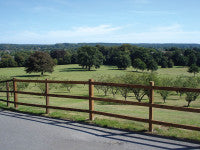
Staffing is key to any business and particularly to a small team with a large variety of demands on them. Training is available for all staff, which usually starts with chainsaw and spraying certificates. Over the years, staff have gained Level 2 Horticulture, Level 3, Tree Inspection, various industry short courses and also training through Pitchcare; latterly the Supervisory Essentials courses, led by Frank Newberry, which Dave describes as "the best workplace training I have had for many years."
In the coming year, Nick is hoping to go on a machinery maintenance course with Pitchcare, Simon to do Tree Inspection at Merrist Wood, and Dave hopes to complete the advanced part of the winter pitches and cricket suites.

Transformation and Success
It's been a building process at Farnborough Hill, starting with two bags of fertiliser per pitch in 2006, the grounds team now operate year round maintenance of all their sports and amenity turf, involving annual spraying for weeds and moss, plus an additional granular feed in September and April. Scarifying takes place twice yearly and seeding annually so, from none in 2006, the grounds now use 100 bags of fertiliser, 35 bags of seed, and gallons of chemical to keep their pitches in tip top condition.
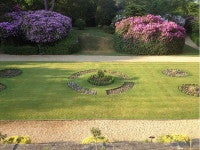
Another area which has seen major transformation is the formal gardens. During the past eight years all the borders and beds have been replanted, bedding introduced, and collections of Cannas, Fuchsias and Hydrangeas built up. The same work has been carried out on the lawns as on the pitches and the stunning gardens now create the perfect setting for the 'Friends' annual garden party in June, along with many other school functions.
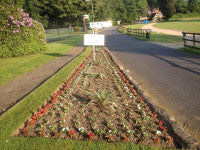
The team plant around 2,000 bedding plants twice each year and, interestingly, the bulbs beside the drive are planted in groups of fifty in bread crates wrapped in wire mesh to protect them from the local wildlife!
The school regularly enter their local competition 'Rushmoor in Bloom' and, in 2011, took Silver Gilt in the Best Commercial Garden category.
Last September, they went one better, winning Gold and again Best Commercial Garden. The award is on display in the school and, whilst the team were hoping to bring home the prize again this September, they were awarded a silver.

Planning and Process
Everything in the grounds here has its place and time. Dave's methodical approach, working to a nominal ten year plan, means that some tasks are extremely regular. For example, every summer the rhododendron hedges are cut, which takes most of July, and then, in August every year, the team complete ten to fifteen panels of featheredge fencing on the perimeter. "We have been steadily replacing all the old and broken panels along the perimeter road, and now have just nine left for next year, before we start again!"

A maintenance book contains a schedule of repairs and servicing to be carried out through the year by the team, who all confess to being amateurs, but more than competent, mechanics.
Trees are a major part of the landscape. The view from the top of the hill is like a typical Capability Brown creation, but has developed naturally over centuries, and includes fine specimen firs, sweet chestnuts and oaks, along with a mass of self seeded ash and other varieties.
The school is surrounded on three sides by roads, including the busy A325 Farnborough Road, so maintenance of larger trees is carried out by a qualified tree surgeon (Toptrees). Smaller limbs and ground work is carried out by the grounds team.

The cost is high as there can be no shortcuts with this work. Over recent years, Dave has surveyed over 500 trees of all sizes and plotted them on tree plans in areas of approximately 30m x15m. The aim is to eventually have all the trees on site mapped and then to have undertaken clearance and maintenance on the entire perimeter.
The grounds department moved to a modern wooden building five years ago which provides a large garage area, a separate workshop (read games room!) and a comfortable tea room/office. It's a thoroughly professional set up which shows the best of the young groundsmen and their abilities.
Even though it sounds busy, the team managed to hold a 'Grounds Olympics' during last year's holidays, competing between themselves in various sports from croquet to golf to pool. Also, in their downtime, they can be seen hacking through the meadow o
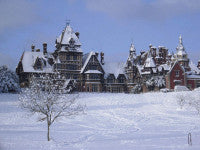
Aside from planning, the team have a passion for getting out and working in the grounds. Each member has his own area of responsibility, but the team then work together, blowing the drives, doing tree work, marking out pitches, and on other special projects.
Building Work
Every school has its share of building work and, this year at Farnborough Hill, construction of a new Music Suite is underway, which is due for completion in November. The new building will look stunning when finished.
However, the only access route was through the gardens so, in February, groundworkers dug through the main lawn beside the school house and laid a road of crushed aggregate. This was then secured with Herras fencing and became the boundary of the grounds teams work. It means that, when the road is lifted and the ground is reinstated, Dave and his team will have a major project to see the area restored properly.
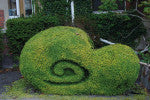
This positive outlook sums up the attitude of the small team at Farnborough Hill. As any groundsman knows, the variety of jobs is huge, but the opportunities and passions are just as big, and here they are alive and well.
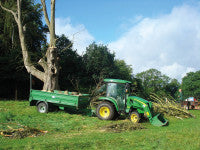
John Deere 3520 tractor (2008)
Ransomes Gangs (1996)
Ryetec 1600 (2007)
Tornado blower (2006)
Geo spreader (2012)
Lishman 250L 5m sprayer (2013)
Chain harrow (2012)
Honda HRD536 21" rotary (2012)
Hayter Harrier 56 rotary (2004)
John Deere rotary (2010)
Ransomes Marquis Mk4a cylinder mower (2012)
Saxon LM56 cylinder mower (2012)
Qualcast cylinder mower and scarifier
John Deere X300R ride on
Saxon Triple ride on
Toro Wheelhorse - no deck, but with trailer
Toro Workman Electric (2012)
The shed is well stocked with a wall of hand tools, and a well equipped workshop with everything from circlip pliers to welder and nail gun

